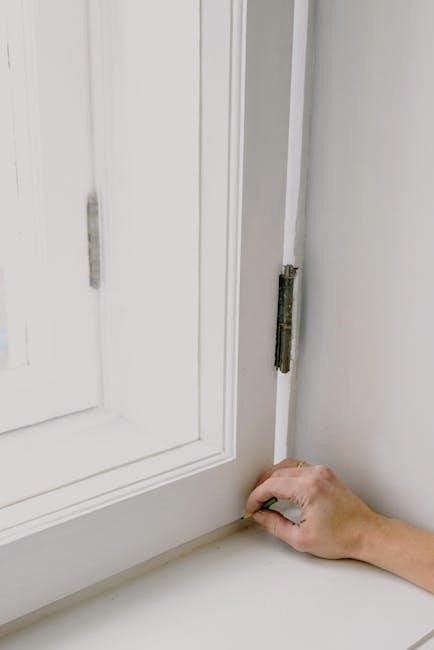V8Js is Google’s open-source JavaScript engine, enabling server-side JavaScript execution in PHP. It enhances performance and compatibility for modern web applications, making it essential for CentOS 7 development.
What is V8Js?
V8Js is a PHP extension that embeds Google’s V8 JavaScript engine, allowing server-side JavaScript execution within PHP applications. It enables developers to run JavaScript code directly on the server, providing a powerful tool for modern web development. V8Js acts as a bridge between PHP and the V8 engine, enabling features like server-side rendering of JavaScript frameworks such as Vue.js. This extension is particularly useful for applications requiring high-performance JavaScript execution in a PHP environment.
Originally designed for Google Chrome, V8 is a high-performance JavaScript engine written in C++. V8Js brings this capability to PHP, making it easier to integrate JavaScript functionality into server-side logic. It supports ECMAScript standards and provides a robust environment for executing JavaScript code seamlessly within PHP scripts.
Why Use V8Js on CentOS 7?
Using V8Js on CentOS 7 offers numerous benefits for developers, particularly those working with PHP applications. It enables server-side JavaScript execution, which is crucial for modern web development tasks like server-side rendering of JavaScript frameworks such as Vue.js. V8Js enhances performance by leveraging Google’s V8 engine, known for its speed and efficiency in executing JavaScript. This makes it ideal for applications requiring high-performance scripting capabilities. Additionally, V8Js allows developers to integrate JavaScript libraries and functionality directly into PHP projects, expanding the possibilities for web development on CentOS 7. By installing V8Js, developers can unlock advanced features and improve the scalability of their applications.

System Requirements and Dependencies
CentOS 7 requires a 64-bit system with sufficient disk space and memory; Essential tools like GCC, make, and cmake must be installed for successful compilation.

Minimum System Requirements for CentOS 7
To install and run V8Js on CentOS 7, ensure your system meets the following requirements: a 64-bit architecture, at least 2 GHz dual-core processor, 4 GB RAM, and 10 GB free disk space. A stable internet connection is necessary for downloading packages and dependencies. The operating system should be updated to the latest version to avoid compatibility issues. Additionally, essential development tools like GCC, make, and cmake must be installed to compile V8Js from source. Meeting these requirements ensures a smooth installation and optimal performance of V8Js for server-side JavaScript execution in PHP applications.
Essential Packages and Tools for Installation
Installing V8Js on CentOS 7 requires several essential packages, including GCC, make, and cmake, which are necessary for compiling the source code. The yum package manager simplifies the installation of these tools. Additionally, development libraries like libstdc++ and libgcc are crucial for successful compilation. The PHP development package, php-devel, is also needed to integrate V8Js with PHP. PECL, a repository for PHP extensions, is used to install the V8Js extension seamlessly. Ensuring all these packages are installed and up-to-date guarantees a smooth installation process and proper functionality of V8Js within your PHP environment.

Downloading and Preparing V8 Source Code
Cloning the V8 repository and checking out the stable branch ensures compatibility and stability for CentOS 7 installation, providing the foundation for a smooth V8Js setup.
Cloning the V8 Repository
To begin the installation of V8Js on CentOS 7, you need to clone the official V8 repository. Open a terminal and navigate to the directory where you want to store the source files. Use the following command to clone the repository:
git clone https://chromium.googlesource.com/v8/v8.git
This command downloads the entire V8 source code, which includes the JavaScript engine and related tools. Ensure you have Git installed on your system before running this command. After cloning, you’ll have a directory named v8 containing all the necessary files for the build process. This step is crucial as it provides the foundation for compiling V8 from source, allowing you to integrate it with PHP for enhanced server-side JavaScript execution.
Checking Out the Stable Branch
After cloning the V8 repository, it’s essential to check out a stable branch to ensure compatibility and reliability. By default, the repository may be on the main branch, which could be unstable for production use. To switch to a stable version, navigate to the V8 directory:
cd v8
Then, fetch all branches and tags:
git fetch
Next, checkout the stable branch using:
git checkout tags/latest -b stable
Replace latest with the specific stable version you need. This ensures you’re working with a tested and reliable version of V8, which is critical for server-side JavaScript execution in PHP environments on CentOS 7.

Building V8 from Source
Building V8 from source on CentOS 7 involves compiling the JavaScript engine to optimize performance and integrate with PHP for enhanced server-side capabilities.
Configuring the Build Environment
To configure the build environment for V8 on CentOS 7, ensure GCC 6+, CMake, and essential development tools are installed. Enable the SCL repository for newer GCC versions. Install dependencies like cmake, make, and libstdc++-devel using yum. Set environment variables to point to the updated GCC and CMake installations. Create a build directory and review V8 documentation for specific build flags. Verify tool versions and dependencies are correctly set before initiating the build process to prevent errors.
Compiling V8 for CentOS 7
Compiling V8 for CentOS 7 involves executing the build process after configuring the environment. Navigate to the build directory and run CMake to generate build files. Then, use Ninja or Make to compile V8. Monitor the compilation process, which may take significant time depending on system resources. Address any errors by checking dependencies or adjusting build flags. Upon successful compilation, V8 libraries will be generated, enabling integration with PHP for enhanced JavaScript execution.
Installing V8Js Extension for PHP
Install V8Js using PECL by running pecl install v8js. Ensure required packages like GCC, make, and cmake are installed. Enable the extension in php.ini for PHP integration.
Using PECL to Install V8Js
The preferred method to install V8Js is via PECL, PHP’s Extension Community Library. Begin by installing the necessary dependencies, including PHP development tools and package managers. Run sudo yum install php-devel to ensure compatibility. Next, install PECL by executing sudo yum install php-pecl. With PECL ready, install V8Js using the command pecl install v8js. This command downloads and compiles the extension automatically. After installation, enable V8Js in your PHP configuration by adding extension=v8js.so to your php.ini file. Restart your Apache or Nginx server to apply the changes. Verify the installation by creating a PHP script with phpinfo; to check for V8Js support. Ensure PHP 7.2 or higher is installed for compatibility. This method streamlines the process and ensures a stable installation.
Enabling V8Js in PHP Configuration
After installing V8Js, you must enable it in your PHP configuration. Locate your php.ini file, typically found in /etc/php.ini on CentOS 7. Open the file in a text editor and add the line extension=v8js.so at the end. Save the changes and restart your web server to apply them. For Apache, use sudo systemctl restart httpd, and for Nginx, use sudo systemctl restart nginx. Finally, verify the installation by creating a PHP script with and check for V8Js under the “PHP Extensions” section. This ensures V8Js is properly integrated and ready for use in your PHP applications.
Verification and Testing
Verify V8 installation by running v8 --version in the terminal. Test PHP integration by creating a script with to confirm V8Js functionality.
Confirming V8 Installation
After installing V8, verify the installation by running the command v8 --version in the terminal. This will display the installed version of V8, confirming successful installation. Additionally, check the PHP configuration to ensure V8Js is properly integrated. Create a PHP script with and access it via a web server. Look for the V8Js section in the output to confirm the extension is loaded. If V8 is not recognized, review the installation logs and environment variables to troubleshoot potential issues. This step ensures V8 and V8Js are correctly installed and ready for use in your PHP applications on CentOS 7.
Testing V8Js Functionality
To ensure V8Js is functioning correctly, create a test PHP script containing . This will display the V8Js version, confirming the extension works. Additionally, use a simple JavaScript execution script like:
executeString('return 1 + 2;');
echo $result;
?>
If the script outputs “3”, V8Js is operational. You can also test more complex JavaScript logic to verify server-side execution. This step ensures V8Js integrates seamlessly with PHP, enabling robust JavaScript functionality in your CentOS 7 environment.
